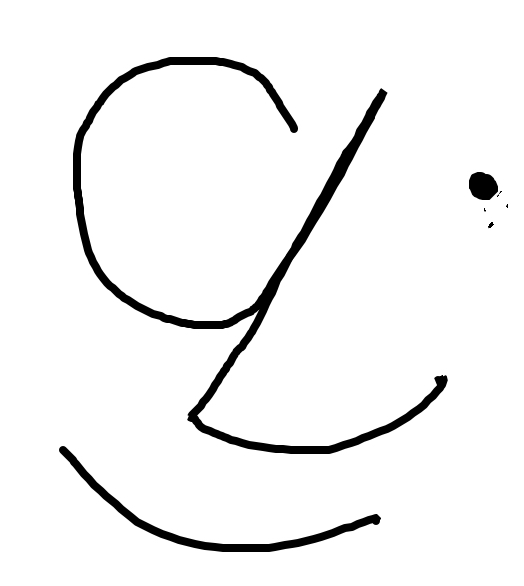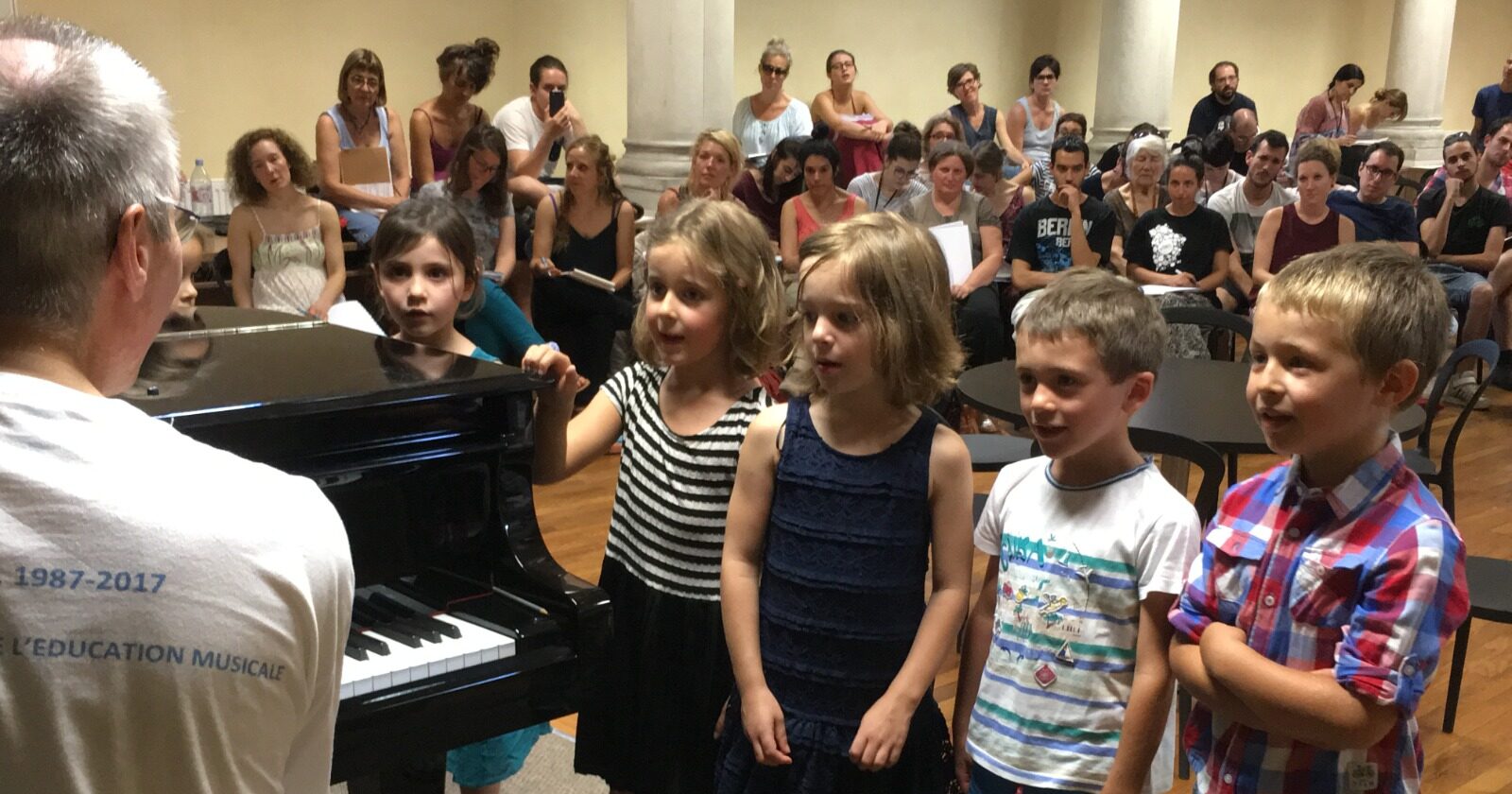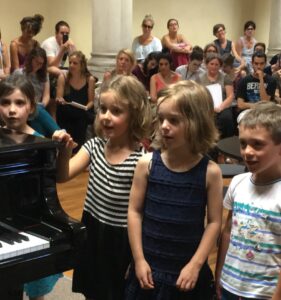Can training in Willems® music education rhyme with curiosity, confidence and freedom?
Training… and afterwards? What space is there between fidelity and creativity?
Conference by Christophe Lazerges
at the end of an Awareness and Training seminar for the Willems® Diploma
Lyon 22 July 2017
Almost all of you have been plotting essays over the last few days so today it’s my turn!
Can training in the Willems® music education pedagogy rhyme with curiosity, confidence and freedom?
To train is to “shape”, but to “train” is another matter.
It means organising, putting things in order, giving meaning to your knowledge and practices, and of course acquiring new knowledge.
So it’s a voluntary action to engage in training. It means accepting the idea that you have something to learn.
Curiosity
So the first element that leads us to training is curiosity, the desire to discover what we don’t know. This is the first step towards the unknown. This is the case for the people who come here as part of the awareness programme. And it was the case for each of us when we took that first step.
What is curiosity?
It means being ready to observe and receive. Receiving is a bit like sensoriality. Curiosity is obviously not sensoriality, but it could be related.
It’s a necessary and decisive quality for entering training.
And it’s more difficult when training is imposed from outside, by an institution, a school…
That’s when you find yourself in the position of being trained, not necessarily of your own free will.
This curiosity is a prerequisite for receiving new knowledge.
Generally speaking, we think of knowledge, and by definition this new knowledge is unknown. We may have preconceived ideas, and we may be very surprised not to receive what we expected.
This is where the second element comes in: trust.
Trust
Confidence in a trainer, and in French the term formateur is not quite the same as the term professeur.
Because training is a bit like the baker shaping the dough.
So if you imagine yourself in the position of the dough being shaped and kneaded, it’s not a very happy prospect!
Instead, it’s the teachers who are going to be responsible for passing on this knowledge, and we have to trust them. And, as is always the case with trust, this trust translates into a degree of abandonment.
Now we’re in the position of being like a soft dough ready to be shaped by the baker, and in a second stage we have to abandon ourselves completely…
The prospect is less and less pleasing!
And yet we need both these elements, because if we don’t want the teacher to take us to a place we don’t yet know, we’re sure not to make the journey.
In Edgar Willems’ teaching proposal, we have a guarantee that this abandonment will not work against us. Except that, as a teacher, I know this guarantee, but the people who come to meet us don’t!
To the confidence that we give, that we hand over to a teacher to follow a course, we should add self-confidence. Once again, this is a matter for each individual: we can’t say “you need to have confidence in yourself to go and take a course”. So it’s more likely that self-confidence will be reinforced by the acquisition of new knowledge at a later stage.
The freedom
There’s no risk in putting your trust in someone for training if you have the freedom to escape.
Freedom lies in the choice: I am, I am going in this direction, or I am not.
To agree to enter this training process, which is not a final decision, I have to retain the freedom to accept or refuse throughout my training.
One of the simplest ways of doing this is to ask questions.
Questioning the teacher and questioning ourselves.
Agreeing to follow the path, and therefore choosing to put your trust in us for a certain period of time, can also mean agreeing to undergo training. Acceptance would then be close to resignation.
There would not be much freedom in this acceptance.
It can also mean accepting responsibility for your own learning.
I’m always free to stop whenever I want.
Freedom is choice. The choice to accept or the choice to refuse. I can refuse a proposal that seems dogmatic. I can refuse, and even have to refuse, training led by a guru. But not all gurus reveal their names. In other words, you can behave like a guru by trying to seduce people into a single way of thinking.
Freedom is therefore the ability to question, to challenge.
From the point of view of freedom, training is very different from formatting.
In our training courses, we seek to conceptualise and provide everyone with the analytical tools and practical training they need to acquire knowledge and know-how.
Knowledge – Know-how – People skills
When you start a training course or read the presentation of a training course, you can clearly see (if it’s well done…) what knowledge, and consequently what skills, you’re going to be covering. Know-how is really practice. It’s very common for people to go into a training course thinking ‘I’m going to learn a few things’ and not realise at the outset that they’re going to have to put them into practice with a certain amount of know-how. And little by little, you come to realise that you need this knowledge and know-how. This is normal in training. Even if you didn’t anticipate it at the outset, you realise that this knowledge requires practice, especially in the field of teaching.
But there’s a third type of knowledge that isn’t talked about much in the presentation leaflets: this is interpersonal skills.
Know-how is about relationships.
From this point of view, it is related to good manners. But people need to learn how to live by the rules if they are to live well in society.
Can we learn how to behave while retaining our freedom? Can a teacher say, “That’s the way you have to be”? Does learning self-management skills mean that “I, the teacher, know how you should be”? “I, the teacher, am going to teach you how to be”… That’s scary! You’re in the position of the guru. “I know, and you have to learn and come to my knowledge”. So it’s not a situation where you’re free.
So it’s not that kind of self-knowledge.
It’s not about learning how to be, and yet we’re going to work on learning how to be in training.
So where does it fit in? We’re going to highlight the balance we need to strike within ourselves between our physical life, our emotional life and our mental life. We’re going to present the importance of achieving coherence between these elements within ourselves.
Knowing how to behave means achieving coherence between what I experience and what I share with or encourage my pupils or students to experience. So it’s about balance and coherence.
A Willemsian reading of the subject
If I now take a Willemsian reading of this subject, “Can training in the Willems® pedagogy rhyme with curiosity, confidence and freedom”, I wonder what the relationship is with Rhythm, Melody and Harmony, which Willems compared with physical life, emotional life and mental life?
So I say to myself: curiosity is the initial impulse, and this impulse must be nurtured, developed and cultivated. It is therefore related to the rhythmic impulse.
And trust? Confidence is the relationship with the other, the relationship with oneself, the sensitivity that is realised in this relationship. It is of the same nature, related to the relationships between sounds, to melodic relationships.
And Freedom? It’s the ability to make choices, to analyse, to decide. It is mental in nature, related to harmony.
These three relationships – curiosity/rhythm, confidence/melody, freedom/harmony – came to mind as I pondered the question. So maybe it’s because I’m formatted in Willems’ way of thinking and I want to fit everything I do and say into the framework at all costs!
You’re free to think so!
I take it differently.
I see it as a means of balancing these three constituent elements. The analysis of music in its three components – rhythm/melody/harmony – in music education helps us to develop the human being in its three physical, emotional and mental dimensions.
In “The Human Value of Music Education”, Edgar Willems presents a number of schemes, which are different ways of looking at the relationships between rhythm, melody and harmony.
Here are a few of his laws: if there is no rhythm, there is no sound; if there is no sound, there is no melodic organisation; and without melody there is no harmony. So there is an almost chronological logic.
Another law: melody has primacy while rhythm has priority and harmony comes as a consequence of both.
There is also the last law that Willems sets out in his diagrams, the law of analogy. Take inspiration from this trilogy of multiple and complex relationships in music and transpose them to other fields. To architecture, literature and poetry, for example, and by extension to “what is training?
So it’s a good idea to balance these three elements – curiosity, confidence and freedom – throughout the course.
Training … and afterwards? What space is there between loyalty and creativity?
The second theme is complementary to the first:
“Training … and afterwards? What space is there between loyalty and creativity?
Loyalty
I begin by defining the terms of my subject, and here I am led to define what fidelity is!
Faithfulness is perhaps the persistence of a bond over time.
Of course, you are always free to think otherwise!
This loyalty can mean maintaining the relationship as it was when it was established.
It can be translated as: “Now I know what it is: ‘I do Willems’! I’ve learnt such and such a principle and I’m doing it, so I’m sticking to the principles…”.
I once saw someone in a class take the sound hammer and hit “like this…” so out of loyalty I think I should always hit “like this” with the sound hammer.
Another time in a lesson I saw a teacher/trainer take a child’s hands to improvise a melody.
So, out of loyalty, I’ll always take a child’s hands to invent something and that way I’ll be faithful to the framework.
Is that a caricature? Yes, but we see it quite often…
This type of loyalty is static.
This type of fidelity is reminiscent of certain couple relationships, where two people walk side by side without changing their habits, independent of each other.
Creativity
Another type of fidelity consists of evolving with the other person. The relationship continues to evolve, it’s a living bond. We’re going to prefer this type of loyalty, which always leaves you free and is based on the fact that Willems talks about functioning and not results. If I continue to take an interest in the way things work, then it’s the people with whom it’s going to happen that will produce the results, and that gives me the means to be creative in reliving these principles. So I can be faithful to a certain type of operation while being creative and remaining connected to my field, music, in coherence with myself.
Willems® training is carried out within the framework of the Willems® International Federation. So what is the link between loyalty to the International Federation and the creation of an evolution? I said creation, but I should say creativity, which is different. If I take the case of Willems, the Federation is first and foremost a Movement. And movement is what moves. So it’s all about staying active and inventive, and one way of doing that is to keep in touch and share experiences.
Loyalty to a Movement means being in the boat as it moves forward, rowing with others to keep it moving, and avoiding getting stuck where you are. The International Federation wants to be a place where people can meet and share. In fact, the federation’s articles of association state that it will “cultivate bonds of friendship between its members”.
The trainers you have met over the last few days are all different from one another. Moving from one workshop to another, seeing one teacher or another at work, is testimony to the freedom of each individual. We talk to each other a lot and we don’t always agree. But we share and exchange. And I invite you to continue these exchanges in the weeks, months and years to come. The dissemination of this pedagogical proposal is still very relevant in today’s world, but this Movement will not continue to live if we make sacred a thought and a practice.
Willems® is anything but a chapel!
To conclude, I’d like to allude to my teacher Jacques Chapuis…
He often said: “We need to train igniters”. We’re not interested in training teachers. What’s interesting is accompanying people who are capable of igniting Life, the fire! And he himself was an exceptional kindler, but not a pyromaniac! The risk is that the igniters may be a bit of igniters themselves… and behave like models to be followed… but in fact there isn’t much risk if these models don’t try to be imitated. And I think, I hope, I’m convinced, that’s not what you’ve encountered among the trainers here.
But the igniters have to make people want to live as intensely as they do.
Live more intensely to live happier! In the end, this is just one way of organising our quest for happiness, which is achieved through music and only through music in our context, with another essential driving force: Joy!
Thank you very much.
Christophe Lazerges.
PS: it’s interesting to draw another analogy between knowledge/mental, know-how/physical, and self-awareness/emotional… Once again 3 elements to balance…


